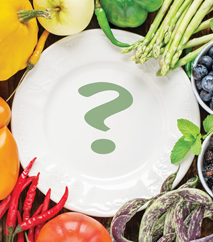Sprouts Farmers Market, on the other hand, is an up-and-comer whose market strategy is to sell organics at lower prices, making them available to a larger, less exclusive customer base. “Other retailers are also moving in this direction,” Park notes, due in part to better production practices and higher yields.
Roger Riehm, president of Blue Creek Produce, LLC in the Chicago area, says organics are definitely getting more space in grocery stores and also predicts a price drop. “As it gets closer to conventional pricing, people will fit it into their budget a little more.” He also sees an increase in aisle space for locally grown produce. “It tells you that people are demanding if not organic, then locally grown, which is why farmers’ markets are growing in each city.”
The emphasis on so-called ‘superfoods’ is still on the rise for 2016, according to Totta, who says kale, blueberries, and sweet potatoes continue to be “on fire” with no signs of slowing down. Edamame and kale sprouts (a kale/Brussels sprouts hybrid) are gaining exposure too. Totta likens the emergence of kale sprouts to baby carrots, when the industry turned less than perfect and broken whole carrots into a bite-sized phenomenon, actually creating demand for a new product.
For Caplan, the new go-to fruit will be an old favorite: citrus. “It seems as if 2016 will be the year of citrus—I think it will also be a big ‘comeback’ year for grapefruit. When Wonderful Citrus LLC (formerly Paramount Citrus) invests big into a commodity like Texas grapefruit, our industry better pay attention.”
Flavor, Color, Size & Shape
The other big trend, according to Totta, is single-serve fruit and vegetable snacks in vending machines and school lunches. These foods fit the “pace of people working and running around with children” who want convenient, yet still healthy food. “Single-sized servings of fruits and vegetables are going to become more available.”
Other innovations include fruits or vegetables marketed specifically for their enhanced and/or distinctive flavor profiles. “Some commodities have definitely been moving in this direction—melons with wonderful flavor, new apple varieties with tang and sweetness,” comments Park. “Retailers use their produce departments to compete, looking for the next ‘wow flavor’ in a product to attract and keep their customers.”
Flavor goes hand in hand with appearance and Riehm sees more emphasis on not just taste, but color and shape too. “We’re looking for a lot more color in the tomato world, new seeds for better taste and appearance. There are many different shapes and colors, but the way it looks and the way it tastes are the key factors in terms of price.”



